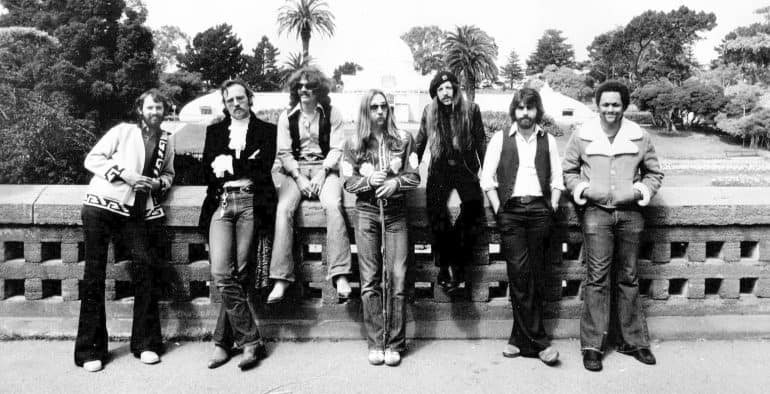Our top 10 best The Doobie Brothers songs list explores the music of one of the most popular California rock bands of the 1970s. By the end of the decade, The Doobie Brothers evolved from a folk, guitar-driven boogie band to a slick, soul-inspired pop band.
Top 10 The Doobie Brothers Songs
10. It Keeps You Runnin’
One of the first Doobie Brothers songs to be Michael McDonald led, this single is from the 1976 album Takin’ It to the Streets. Written by a former member of Steely Dan Michael McDonald, the track peaked at No. 37 in the Billboard pop singles.
A cover version of the song by Carly Simon ended up doing better in the singles charts than the bands. It was also included in the multi-platinum selling soundtrack album for the Oscar-winning film Forrest Gump.
9. Dependin’ On You
Released on their 1978 album Minute by Minute, the album was their first without founder Tom Johnston. It became their biggest ever record, spending five weeks atop the charts. “Dependin’ On You,” written by McDonald and founding member Patrick Simmons, peaked at No. 25 in the Billboard Top 100.
8. Take Me in Your Arms (Rock Me a Little While)
The only cover on our list of the best Doobie Brothers songs, “Take Me in Your Arms (Rock Me a Little While” became the most successful single from their 1975 album Stampede. This classic Motown tune was written by the legendary songwriting trio Holland-Dozier-Holland. Tom Johnston, who lends his vocals for the song, cited it as one of his favorite songs of all time. The song peaked at No. 11 on the Billboard Top 100.
7. China Grove
From their 1973 album The Captain and Me, “China Grove” is a tough guitar-driven track on an album full of fine guitar riffs. The song features brilliant interplay between guitarist Tom Johnston and drummer John Hartman. This timeless classic reached the No. 15 spot on the Billboard Top 100 in 1973.
6. Takin’ It to the Streets
The first Doobie Brothers song with Michael McDonald on vocals after he joined the band. “Takin’ It to the Streets” was the title track of their 1976 album. McDonald’s expressive vocals helped the group appeal to more pop and R&B audiences. It peaked at No. 13 on the Billboard Top 100.
5. Minute by Minute
The title track of their 1978 album was nominated for a Grammy Award for Song of the Year but lost out to one of the most successful of all Doobie Brothers songs, “What a Fool Believes.” Written by McDonald and Lester Abrams, the song features the cool organ playing of McDonald’s, creating a soulful number covered by numerous artists including The Temptations. It reached No. 14 in the Billboard Top 100.
4. Listen to the Music
One of the most popular The Doobie Brothers songs, the hippie anthem is reminiscent of the band’s early work. It reached No. 11 in the charts, becoming their first Top 40 hit, narrowly missing out on the Top 10. Tom Johnston, the writer of the song, later said in an interview that the track was a plea for world peace.
“The chord structure of it made me think of something positive, so the lyrics that came out of that were based on this utopian idea that if the leaders of the world got together on some grassy hill somewhere and either smoked enough dope or just sat down and just listened to the music and forgot about all this other bullshit, the world would be a much better place. It was very utopian and very unrealistic (laughs). It seemed like a good idea at the time.”
3. Black Water
In 1974, “Black Water” became the only Doobie Brothers song to become a No. 1 hit that wasn’t written or sung by either Tom Johnston or Michael McDonald. Instead, it was the genius of Patrick Simmons that both wrote and sang the lead vocals. Originally released on the B side to the single “Another Park, Another Sunday,” it garnered so much interest that it was later released as the album What Were Once Vices Are Now Habits third single.
2. Long Train Runnin’
Probably one of the most recognizable guitar riffs throughout the band’s career, like many of the early Doobie Brothers songs, “Long Train Runnin'” evolved from a jam session. The popular track was written by Tom Johnston and was included as part of their 1973 album The Captain and Me. It peaked at No. 8 on the Billboard Top 100.
1. What a Fool Believes
To this day, “What a Fool Believes” is the most successful of all The Doobie Brothers songs. Written by Michael McDonald and Kenny Loggins, at the 1980 Grammy Awards it won Song of the Year and Record of the Year. It peaked at No 1 in the Billboard Hot 100 and is part of their 1979 album Minute by Minute.
Further Listening: Top 10 Bad Company Songs
The Doobie Brothers – History
The Doobie Brothers are an American band which formed in the early 1970s. The band currently consists of founding members Tom Johnston and Patrick Simmons, longtime members Michael McDonald and John McFee and current touring members John Cowan, Bill Payne, Marc Russo, Ed Toth, and Marc Quiñones.
Nearly five decades of being active, the band has undergone several changes in their line up with their sound transforming along the way. They have sold over 40 million records worldwide and are currently nominated for the 2020 Rock and Roll Hall of Fame.
Early Years
The Doobie Brothers came to be when John Hartman arrived in California in hopes to meet Skip Spence, a member of Moby Grape. Spence introduced Hartman to the singer, songwriter, and guitarist Tom Johnston. In 1970, they went on to form a group with guitarist Patrick Simmons and bass guitarist Dave Shogren.
Musician Keith “Dyno” Rosen who lived next door to the group suggested the name “Doobie Brothers.” According to Johnston, Rosen said, “Why don’t you call yourself the Doobie Brothers because you’re always smoking pot?” They agreed to call themselves the “Doobie Brothers” for the time being until they came up with a better one, but they never did.
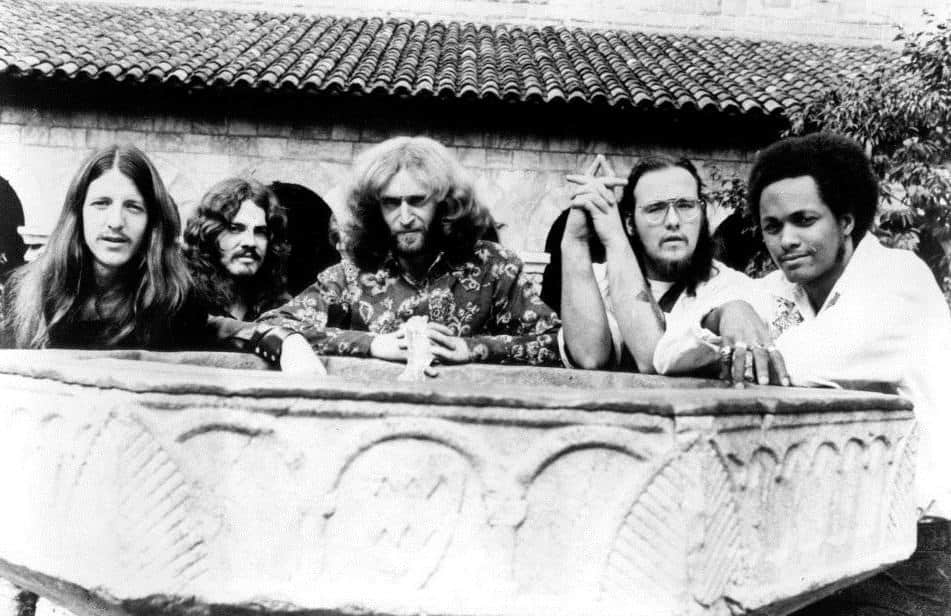
In 1970 they traveled around Northern California performing live earning them a strong following. The group signed under Warner Bros. Records in 1971 and debuted with a self-titled album that differed vastly from their image and sound during that period.
The album failed to chart. It’s lead single “Nobody” was re-recorded and included in their 2010 album World Gone Crazy. They started their first national tour with the group Mother Earth in the “Mother Brothers Tour.” They also added a second drummer named Michael Hossack who performed with them in some of their shows and later became a regular.
In the same year, while the band was in the process of recording songs for their second album, Shogren left the group due to a disagreement with the band’s new producer Ted Templeman. He was replaced with singer, songwriter, and bass guitarist Tiran Porter. His baritone voice and hip base style was a great addition to the band.
Mainstream Success
In July 1972, the group’s second album Toulouse Street was released, bringing them mainstream success. The album features hit single and one of the most famous Doobie Brothers songs “Listen to the Music.”
Their 1973 album The Captain and Me also gave notable hits such as “Long Train Runnin'” and “China Grove.” In the same year, while preparing for their next album and tour, member Hossack left due to exhaustion from excessive touring. He was replaced by drummer Keith Knudsen.
In 1974, guitarist Jeff “Skunk” Baxter joined The Doobie Brothers as his formed band Steely Dan was slowing down. He previously worked with them in the studio when recording “South City Midnight Lady” and also in their 1974 album for the singles “Black Water” and “Tell Me What You Want.”
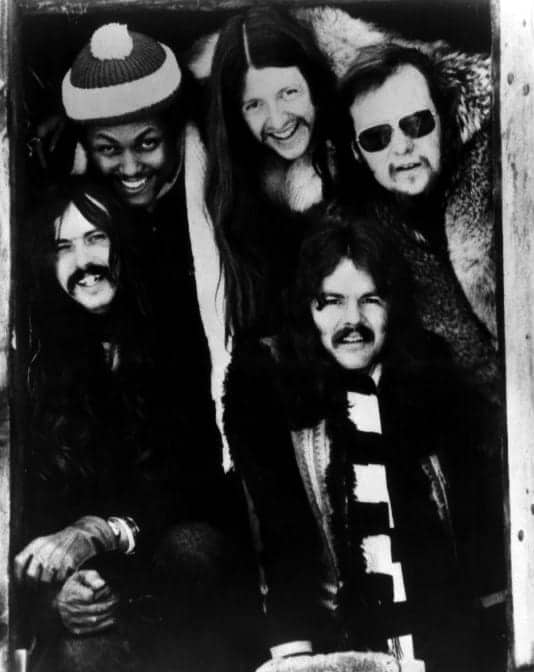
The single “Black Water” went on to top the charts in 1975 and led the album What Were Once Vices Are Now Habits to multi-platinum status. During this period, The Memphis Horns often supported the group on stage. They also partook in multiple sessions for the group’s albums.
At the end of 1974, member Johnston was suffering from health issues. Their fifth studio album Stampede was completed and soon to be released in 1975. Johnston’s cover of “Take Me in Your Arms” on the album became another hit single.
However, at the beginning of their promotional tour for the album, Johnston’s health was deteriorating and had to be hospitalized for a bleeding ulcer. Due to his absence, singer, songwriter, and keyboardist Michael McDonald, another member of Steely Dan was recruited, forever changing the sound of the band.
Change in Sound
The Doobie Brothers underwent a profound change in their music style which is evident in their 1976 album Takin’ It to the Streets. With Johnston unavailable, they had to depend on McDonald and Porter for song materials, leading to a transformation in their sound.
This change brought a more soft-rock, jazzy and blue-eyed soul sound while highlighting horns and keyboards coupled with a variety of rhythms mashed together. But the album delivered more Doobie Brothers songs that would go on to become hits, such as title track “Takin’ It to the Streets” and “It Keeps You Runnin.'”
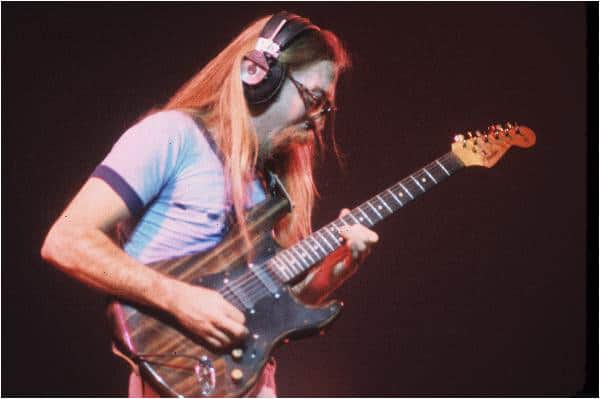
Johnston contributed to the track “Turn It Loose” and also made live appearances during some of the band’s live concerts in 1976 when he was restored to good health. But he was soon sidelined as his health deteriorated again. He had his songs removed from their next album Livin’ on the Fault Line and officially left the group, but was still credited for his vocals and guitars as well as appearing on the album’s inner sleeve band photo.
The band’s 1977 album Livin’ on the Fault Line further solidified their new sound and showed McDonald’s significant role in the group. During this time, Bobby LaKind served as a percussionist and provided backup vocals for the band. He had been part of the band’s lighting crew team since 1974.
The Doobies’ 1978 album Minute by Minute was a huge success and spent five weeks at the top of the charts. The album won them a Grammy for Pop Vocal Performance by a Group and was also nominated for Album of the Year. The album featured one of the most successful Doobie Brothers songs, “What a Fool Believes.”
Though the album was a huge success earning them a lot of accolades, the members were having a hard time from touring and the pressure of releasing an album each year. There were even talks of disbanding. McDonald and Baxter had creative conflicts going on, with McDonald inclining towards a more rock, soulful, and R&B sound while Baxter leaned more towards an avant-garde style of sound.
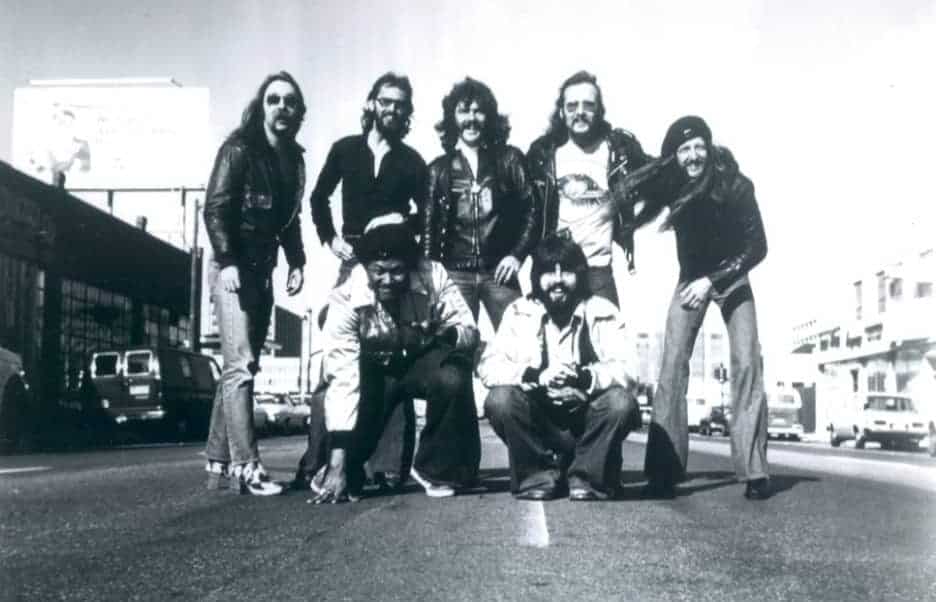
The group briefly toured Japan and appeared on Saturday Night Live which marked their last live performance and television appearance as a group. Soon after, Baxter, Hartman, and LaKind left.
In 1979 drummer Chet McCracken replaced Hartman and Baxter was replaced by John McFee, a multi-instrumental string player. Cornelius Bumpus was also added who served vocals, saxophone, and keyboard. They toured around the same year, which included stops at Madison Square Garden and also took part in the benefit show for No Nukes with artists such as Bonnie Raitt and Crosby, Stills & Nash.
In 1980 LaKind returned to the line-up and the group released their ninth studio album titled One Step Closer. The track “Real Love” was a hit and peaked at No. 5 on the Billboard Hot 100. However, the album did not do as well as their previous one. It was also noticeably weaker musically.
Porter left the group after the recording of One Step Closer due to the stress and pressure of touring relentlessly and battling against drug addiction at the same time. Willie Weeks joined as bassist, and the band continued touring right through 1980 and 1981.
By the end of 1981, the last original member Simmons decided to leave the group and McDonald was also ready to pursue a solo career. This left the group with no choice but to disband. The band reunited for a farewell tour in 1982.
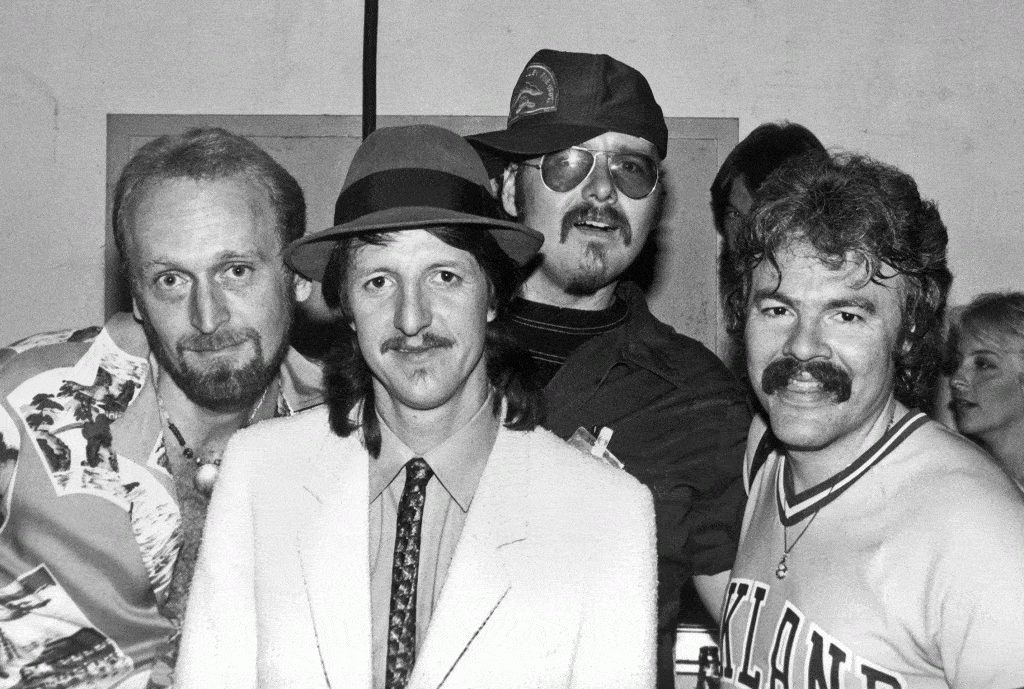
They held their final concert in September 1982 at the Greek Theatre in Berkeley, California. Former members Johnston, Porter, Hartman and Hossack joined the group for an extended version of “Listen to the Music.” The live album from their tour Farewell Tour was released in 1983 and Live at the Greek Theatre 1982 was released in 2011.
After Disbandment
During the five years The Doobie Brothers were not active, various members got together to perform for yearly Christmas performances at the Stanford Children’s Hospital in the Bay area for the patients and staff. Johnston toured with a band named Border Patrol around various clubs though they did not release any recordings.
Simmons released a solo album titled Arcade in 1983 but it did not do well commercially. Johnston and Simmons were also in discussion of releasing an album together in 1986 but soon abandoned the idea.
Knudsen and McFee came together to form a band called Southern Pacific in 1983. Stu Cook joined the group in 1986 as a bassist and guitarist David Jenkins in 1988. Southern Pacific went on to release a total of four albums in their career, becoming successful in the country charts. McDonald also established himself as a solo artist and was well known in the adult contemporary radio scene during the 1980s.
Reunion
The reformation of The Doobie Brothers was done without knowing when Knudsen, after overcoming his drug addiction, took an active part in the Vietnam Veterans Aid Foundation. He persuaded the former 11 members to take part in a worthy cause by joining him in a concert for the welfare of veterans.
Due to the high demand for tickets, the concert turned into a 12-city tour that started on May 21, 1987. The successful reunion eventually led to the release of their 1989 album Cycles with the line-up consisting of Johnston, Hartman, Simmons, Hossack, Porter, and LaKind. The album was certified gold, and it’s single “The Doctor” peaked at No. 9 on the Billboard Hot 100.
After the success of Cycles, the band went on to release Brotherhood in 1991. The album was sadly unsuccessful. In more recent times, the band has continued touring and playing The Doobie Brothers songs everyone knows and loves.
We hope you’ve enjoyed our 10 best The Doobie Brothers songs list and a brief history of this legendary band.
More Music Lists…
- The Alice Cooper Fact Sheet – 5 Things You Need To Know - January 12, 2023
- Everybody Knows The Words, But What Is Hotel California About? - April 29, 2022
- What Is The Meaning Of Stairway To Heaven: Led Zeppelin’s Amazing 1971 Musical Epic? - April 24, 2022


